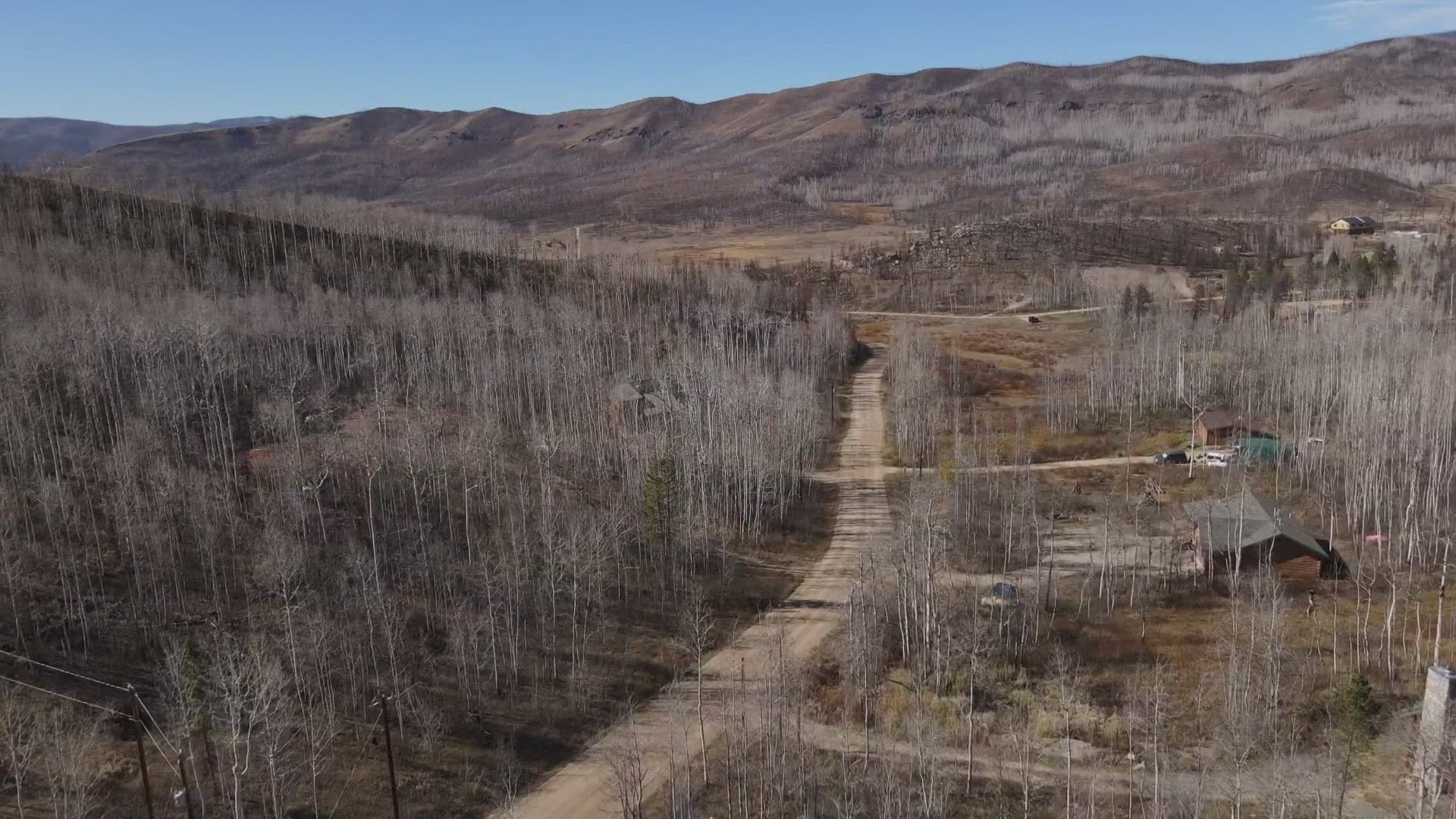Canada’s government will present legislation this month to start paying subsidies for carbon capture and net-zero energy projects, a source told Reuters, part of a plan to worth around $20 billion over five years. A long delay in state support for carbon capture utilization and storage (CCUS) projects and for equipment used to produce low-carbon energy prompted industry lobbies to warn in September that some C$50 billion worth of investments were at risk if the government did not act soon. Finance Minister Chrystia Freeland will announce the investment tax credit funding when she presents the Fall Economic Statement to parliament on Tuesday. …Canada is lagging the U.S. on the incentives seen as necessary to spur investment in new, low-carbon technologies. Washington has been offering massive incentives to clean tech companies under the U.S. Inflation Reduction Act for well over a year. …Bank of America estimates it has already spurred $132 billion of investment across more than 270 new clean energy projects.
/cloudfront-us-east-2.images.arcpublishing.com/reuters/MUCU7WJPZBMQRJTTH3BLWNO2Y4.jpg)

 GATINEAU
GATINEAU

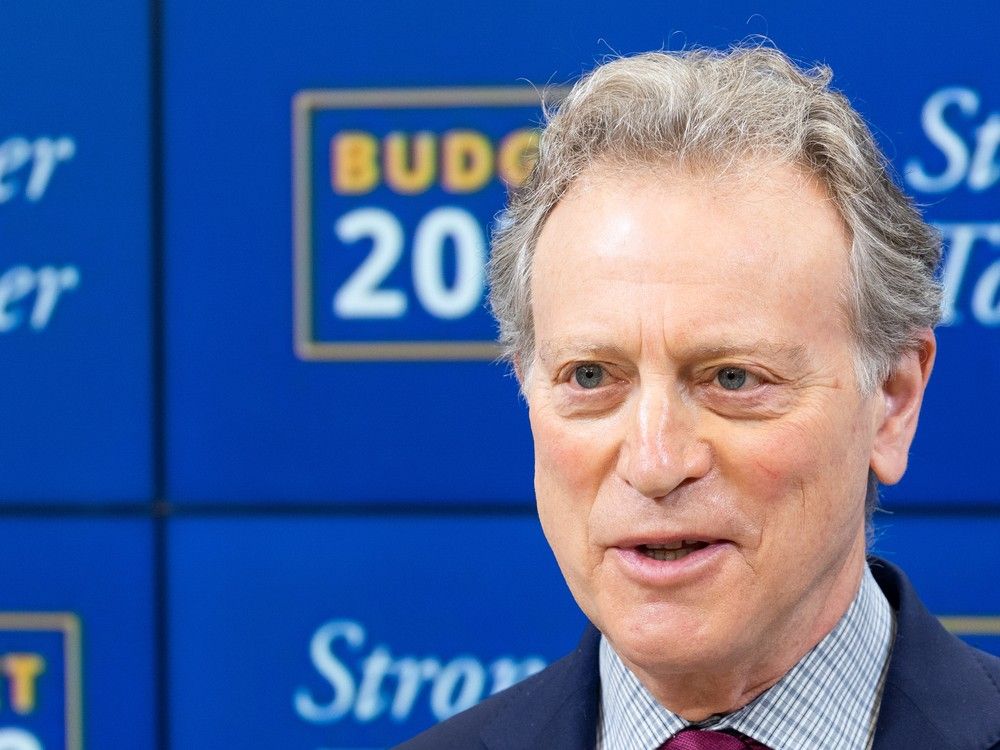



 The Copernicus Atmosphere Monitoring Service said that carbon emissions from wildfires across Canada from Jan. 1 to July 31 totalled 290 megatonnes – more than double the previous record for the year as a whole. It’s thought that around 40 megatonnes of that total came from B.C.’s wildfires. …“The UN framework convention on climate change dictates that non-human related activities are not reported in greenhouse gas emission inventories,” the Ministry of Environment said. “In B.C., forest fire emissions are included in our provincial greenhouse gas Inventory for transparency; however, they are not counted towards the reported totals by either B.C. or Canada, in line with international practice.” …Jens Wieting, the Sierra Club’s climate campaigner said “(The emissions) are now so huge that it’s important …to improve forest management, restore some of the forests that are very damaged and to improve the ability of forests to hold and sequester more carbon.”
The Copernicus Atmosphere Monitoring Service said that carbon emissions from wildfires across Canada from Jan. 1 to July 31 totalled 290 megatonnes – more than double the previous record for the year as a whole. It’s thought that around 40 megatonnes of that total came from B.C.’s wildfires. …“The UN framework convention on climate change dictates that non-human related activities are not reported in greenhouse gas emission inventories,” the Ministry of Environment said. “In B.C., forest fire emissions are included in our provincial greenhouse gas Inventory for transparency; however, they are not counted towards the reported totals by either B.C. or Canada, in line with international practice.” …Jens Wieting, the Sierra Club’s climate campaigner said “(The emissions) are now so huge that it’s important …to improve forest management, restore some of the forests that are very damaged and to improve the ability of forests to hold and sequester more carbon.”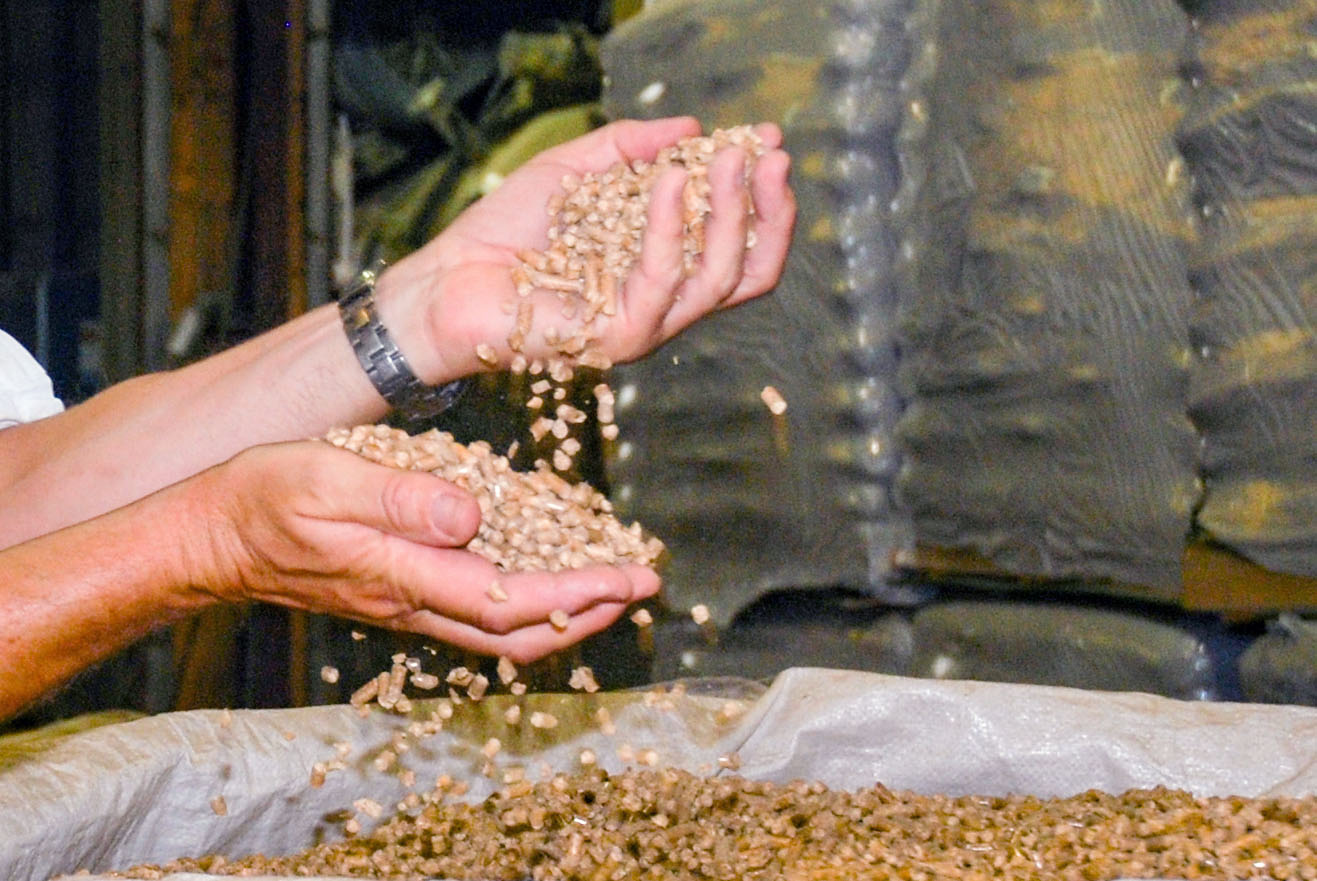 The first-ever rating for a Bioeconomy Development Opportunity Zone in Alberta could allow the Grande Prairie region to explore more renewable energy options. The Municipal District of Greenview and the County of Grande Prairie’s BDO Zone has received an ‘A’ rating from the BDO Zone Initiative for the area’s woody biomass. It’s reported the rating comes from the region’s “robust” forestry and wood industry sector. According to the International Energy Agency, woody biomass provides a renewable energy source, or bioenergy, through the burning of trees, sawmill residue, and forest residue such as branches which contain carbon absorbed through photosynthesis. The BDO Zone Initiative adds that strong BDO zone ratings allow distressed economies to shift to renewable energy. County of Grande Prairie Reeve Robert Marshall says the rating validates what the municipalities already know and symbolizes the efforts the region has taken to move toward a stronger renewable energy-based economy.
The first-ever rating for a Bioeconomy Development Opportunity Zone in Alberta could allow the Grande Prairie region to explore more renewable energy options. The Municipal District of Greenview and the County of Grande Prairie’s BDO Zone has received an ‘A’ rating from the BDO Zone Initiative for the area’s woody biomass. It’s reported the rating comes from the region’s “robust” forestry and wood industry sector. According to the International Energy Agency, woody biomass provides a renewable energy source, or bioenergy, through the burning of trees, sawmill residue, and forest residue such as branches which contain carbon absorbed through photosynthesis. The BDO Zone Initiative adds that strong BDO zone ratings allow distressed economies to shift to renewable energy. County of Grande Prairie Reeve Robert Marshall says the rating validates what the municipalities already know and symbolizes the efforts the region has taken to move toward a stronger renewable energy-based economy.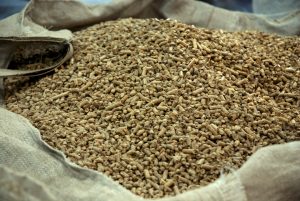 CHARLOTTETOWN, P.E.I. — The P.E.I. government has begun to review the process of using wood to heat buildings in P.E.I. after the submission of the Forestry Commission’s review of the growing industry. …A review of the Island’s biomass heating industry presented to the government by the Forestry Commission in October prompted the province to begin amending the process surrounding the current environmental impact assessment. Jean-Paul Arsenault, chair of the Forestry Commission… says the commission wants the province to define key environmental terms such as sustainability, biomass fuel and mixed residue so that those definitions can be referenced in legislation and future government activities. “We asked ourselves ‘what does sustainability mean,’ and we couldn’t find a definition anywhere,” Arsenault said. Alex Pratt, biomass operations manager at Wood4Heating agreed with the commission’s review.
CHARLOTTETOWN, P.E.I. — The P.E.I. government has begun to review the process of using wood to heat buildings in P.E.I. after the submission of the Forestry Commission’s review of the growing industry. …A review of the Island’s biomass heating industry presented to the government by the Forestry Commission in October prompted the province to begin amending the process surrounding the current environmental impact assessment. Jean-Paul Arsenault, chair of the Forestry Commission… says the commission wants the province to define key environmental terms such as sustainability, biomass fuel and mixed residue so that those definitions can be referenced in legislation and future government activities. “We asked ourselves ‘what does sustainability mean,’ and we couldn’t find a definition anywhere,” Arsenault said. Alex Pratt, biomass operations manager at Wood4Heating agreed with the commission’s review. WASHINGTON, DC – The U.S. Department of Agriculture announced its contributions to the
WASHINGTON, DC – The U.S. Department of Agriculture announced its contributions to the 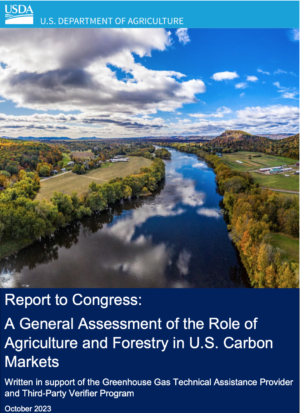 As directed by the Consolidated Appropriations Act of 2023 that was signed into law by President Biden on December 29, 2022, on October 23, the U.S. Department of Agriculture released the report on its general assessment of the state of the U.S. compliance and voluntary carbon markets for the agricultural and forestry sectors. The report, titled
As directed by the Consolidated Appropriations Act of 2023 that was signed into law by President Biden on December 29, 2022, on October 23, the U.S. Department of Agriculture released the report on its general assessment of the state of the U.S. compliance and voluntary carbon markets for the agricultural and forestry sectors. The report, titled 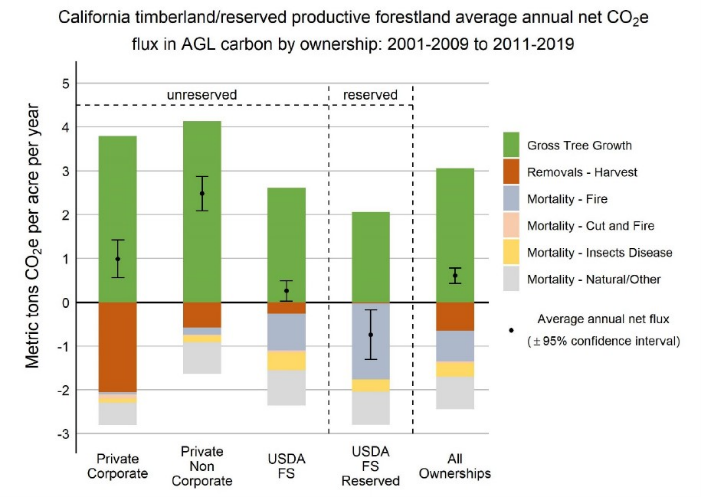
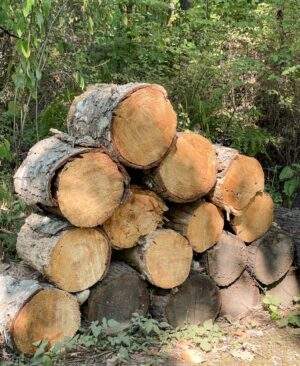 A startup backed and incubated by Bill Gates’ Breakthrough Energy Ventures has engineered a hybrid technology that combines engineering with natural photosynthesis processes to remove carbon dioxide from the atmosphere and store it underground. …Graphyte takes waste biomass like discarded wood residue or rice hulls, dries and sterilizes it to prevent decomposition. It then condenses it into dense carbon blocks, wraps it in a proprietary polymer barrier and stores it underground in an engineered storage site. …Graphyte says its levelized cost of production is currently under $100 per ton, a moonshot target for carbon removal that direct air capture is still far from achieving. It also requires a tenth of the energy of direct air capture, and the carbon blocks are projected to be durable for over a thousand years, due in part to the proprietary polymer barrier protecting them, according to Rogers.
A startup backed and incubated by Bill Gates’ Breakthrough Energy Ventures has engineered a hybrid technology that combines engineering with natural photosynthesis processes to remove carbon dioxide from the atmosphere and store it underground. …Graphyte takes waste biomass like discarded wood residue or rice hulls, dries and sterilizes it to prevent decomposition. It then condenses it into dense carbon blocks, wraps it in a proprietary polymer barrier and stores it underground in an engineered storage site. …Graphyte says its levelized cost of production is currently under $100 per ton, a moonshot target for carbon removal that direct air capture is still far from achieving. It also requires a tenth of the energy of direct air capture, and the carbon blocks are projected to be durable for over a thousand years, due in part to the proprietary polymer barrier protecting them, according to Rogers. 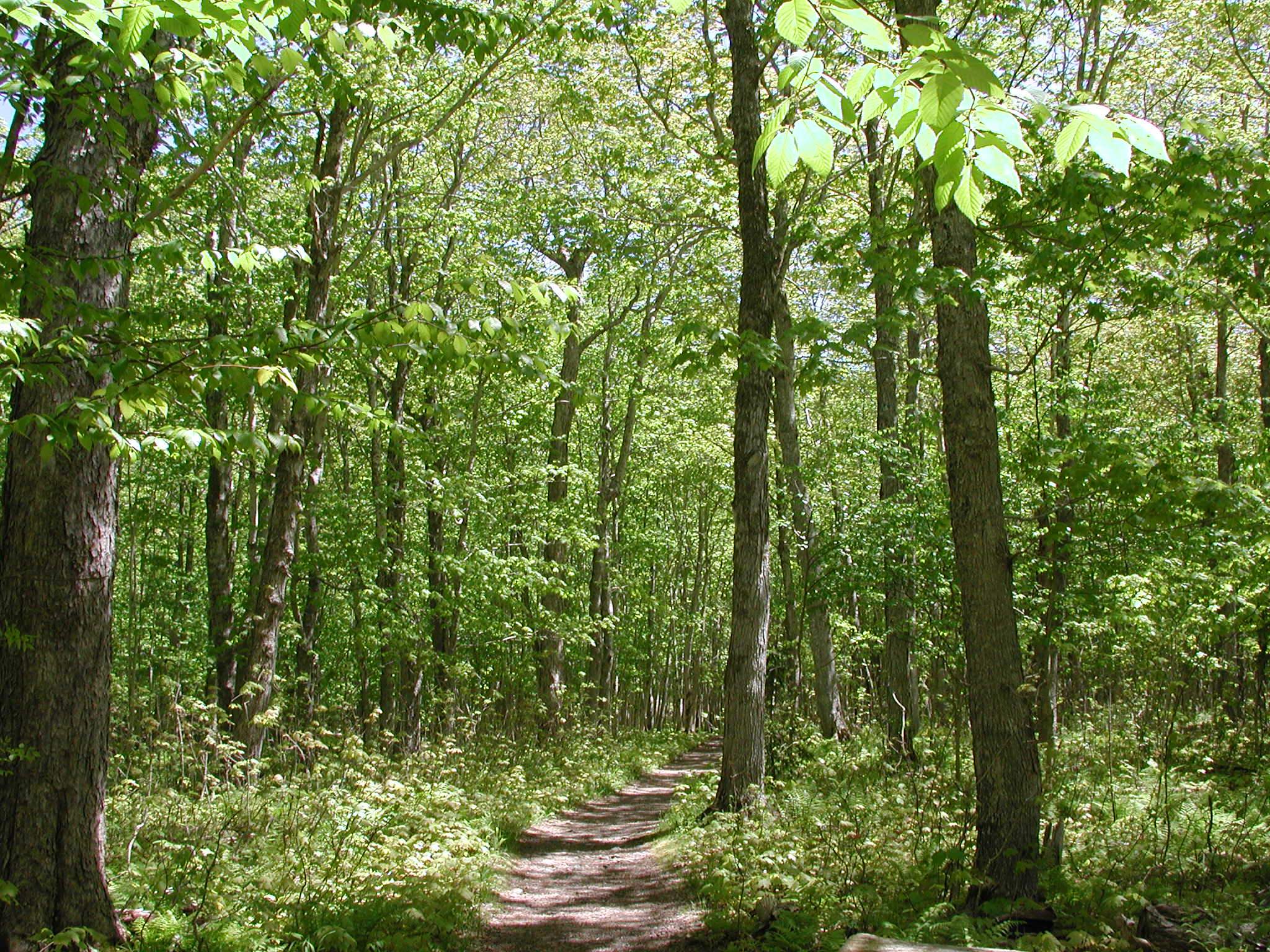 NEW YORK – Environmental organizations are increasingly focusing on landowners to help with the storage of carbon dioxide. A new carbon offset program hit the Adirondacks this month, which offers cash to woodlot owners. …The vast carbon sinks [in forests] are looked at by many scientists as natural climate solutions that can help reach ambitious climate goals such as those set in New York’s Climate Leadership and Community Protection Act. Two organizations zeroing in on family landowners are The American Forest Foundation and The Nature Conservancy, which developed the Family Forest Carbon Program (FFCP) in 2020 with projects in Pennsylvania. Now in New York, the organization pays landowners with at least 30 acres to limit tree harvesting or practice management strategies with the help of foresters. …Upkeep and taxes on family land can be burdensome, leading to its sale. With payments from the FFCP, that land has more potential to stay the way it is.
NEW YORK – Environmental organizations are increasingly focusing on landowners to help with the storage of carbon dioxide. A new carbon offset program hit the Adirondacks this month, which offers cash to woodlot owners. …The vast carbon sinks [in forests] are looked at by many scientists as natural climate solutions that can help reach ambitious climate goals such as those set in New York’s Climate Leadership and Community Protection Act. Two organizations zeroing in on family landowners are The American Forest Foundation and The Nature Conservancy, which developed the Family Forest Carbon Program (FFCP) in 2020 with projects in Pennsylvania. Now in New York, the organization pays landowners with at least 30 acres to limit tree harvesting or practice management strategies with the help of foresters. …Upkeep and taxes on family land can be burdensome, leading to its sale. With payments from the FFCP, that land has more potential to stay the way it is. 
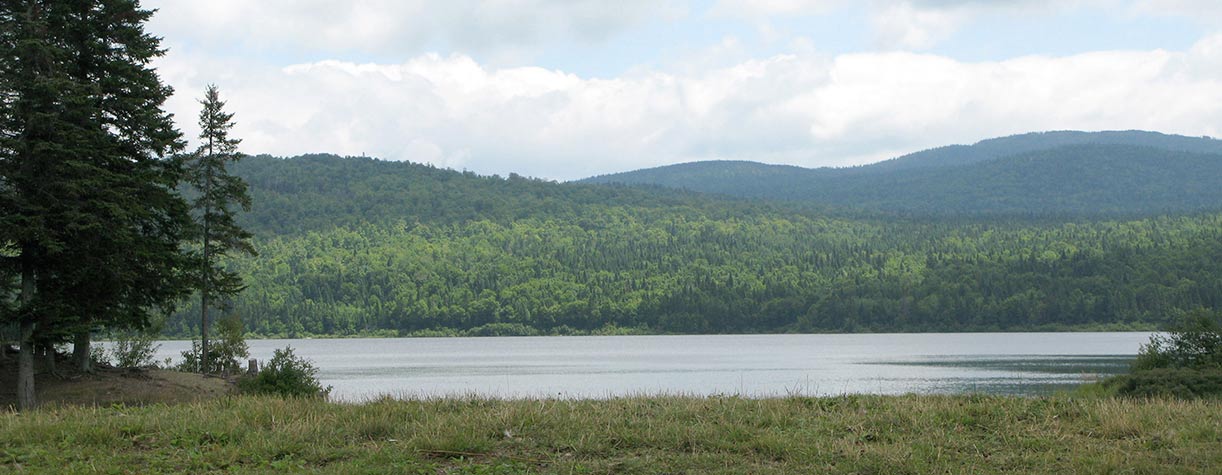
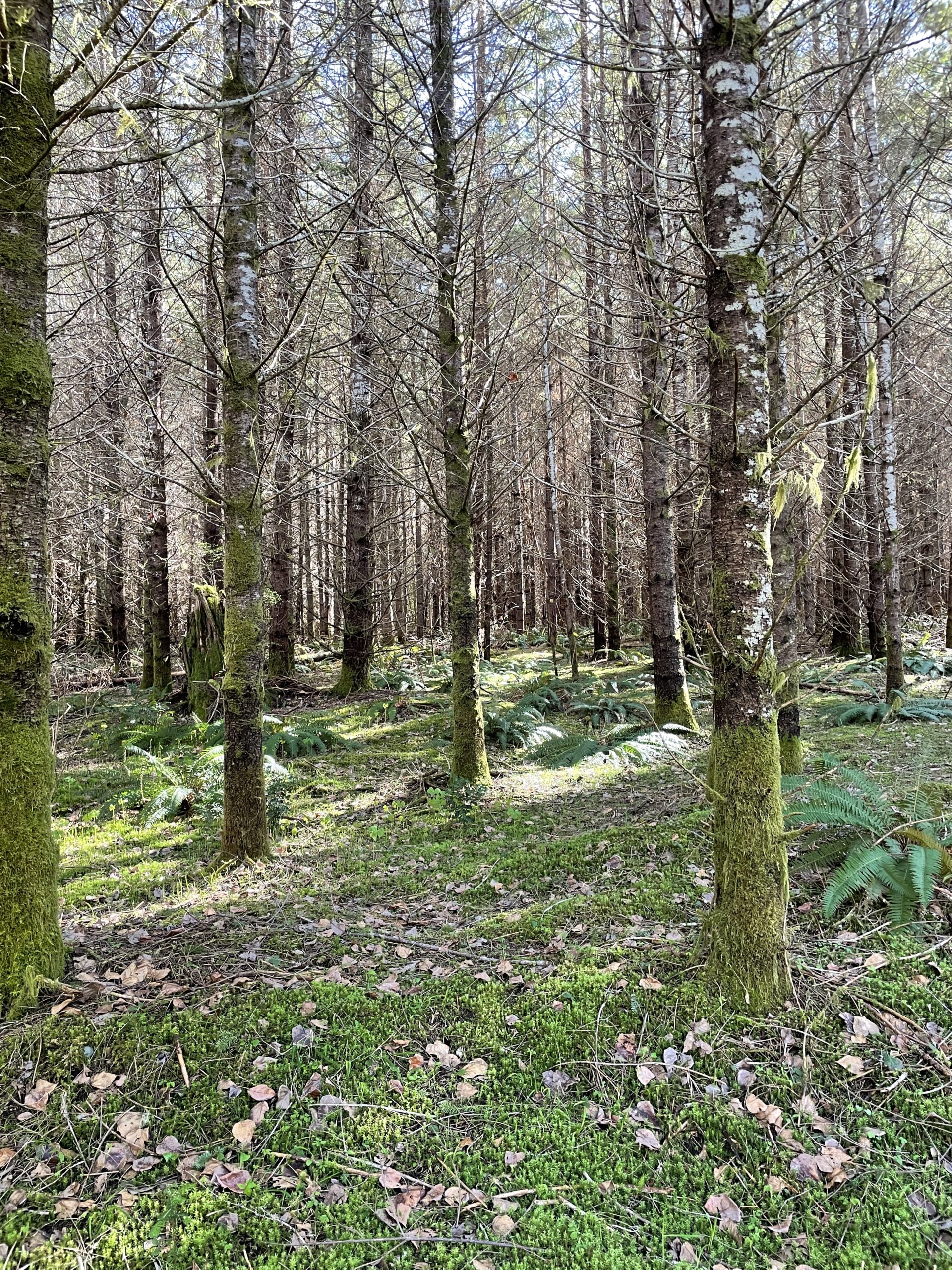 Alabama’s forest products industry is growing. Our state boasts more than 23 million acres of forests, which enables Alabamians to produce $12.5 billion in forest products every year. That makes forest products manufacturing one of the top industries in our state. This industry has not only added jobs to Alabama’s workforce but has also provided a sustainable means of managing forests, stimulating rural economies, and contributing significantly to the state’s overall economic growth. While pulp and paper, lumber, and other solid wood products have been a mainstay in the forest products industry for decades, a newer industry is opening up markets for Alabama’s timber industry—sustainably-sourced wood pellets. …Forests need periodic timber harvest to remain healthy. By providing additional markets, the wood pellet industry enables loggers to thin out some of these crowded timber stands that might not otherwise be harvested. This creates healthier forests for both large and small landowners.
Alabama’s forest products industry is growing. Our state boasts more than 23 million acres of forests, which enables Alabamians to produce $12.5 billion in forest products every year. That makes forest products manufacturing one of the top industries in our state. This industry has not only added jobs to Alabama’s workforce but has also provided a sustainable means of managing forests, stimulating rural economies, and contributing significantly to the state’s overall economic growth. While pulp and paper, lumber, and other solid wood products have been a mainstay in the forest products industry for decades, a newer industry is opening up markets for Alabama’s timber industry—sustainably-sourced wood pellets. …Forests need periodic timber harvest to remain healthy. By providing additional markets, the wood pellet industry enables loggers to thin out some of these crowded timber stands that might not otherwise be harvested. This creates healthier forests for both large and small landowners. /cloudfront-us-east-1.images.arcpublishing.com/gray/AG4JC4WQWNAJPJTE4TXXQC5ZIM.png)
 Earth is on track for 3 degrees Celsius of warming, and humanity needs to make deep emission cuts this decade to have a chance of fulfilling the goals of the Paris climate agreement, the United Nations said in a report released Monday. The findings come amid record setting global temperatures and as the amount of planet warming pollution in the atmosphere reaches new heights. It also underscores the enormity of the task facing climate negotiators as they prepare for talks in Dubai, United Arab Emirates, later this month. …The
Earth is on track for 3 degrees Celsius of warming, and humanity needs to make deep emission cuts this decade to have a chance of fulfilling the goals of the Paris climate agreement, the United Nations said in a report released Monday. The findings come amid record setting global temperatures and as the amount of planet warming pollution in the atmosphere reaches new heights. It also underscores the enormity of the task facing climate negotiators as they prepare for talks in Dubai, United Arab Emirates, later this month. …The 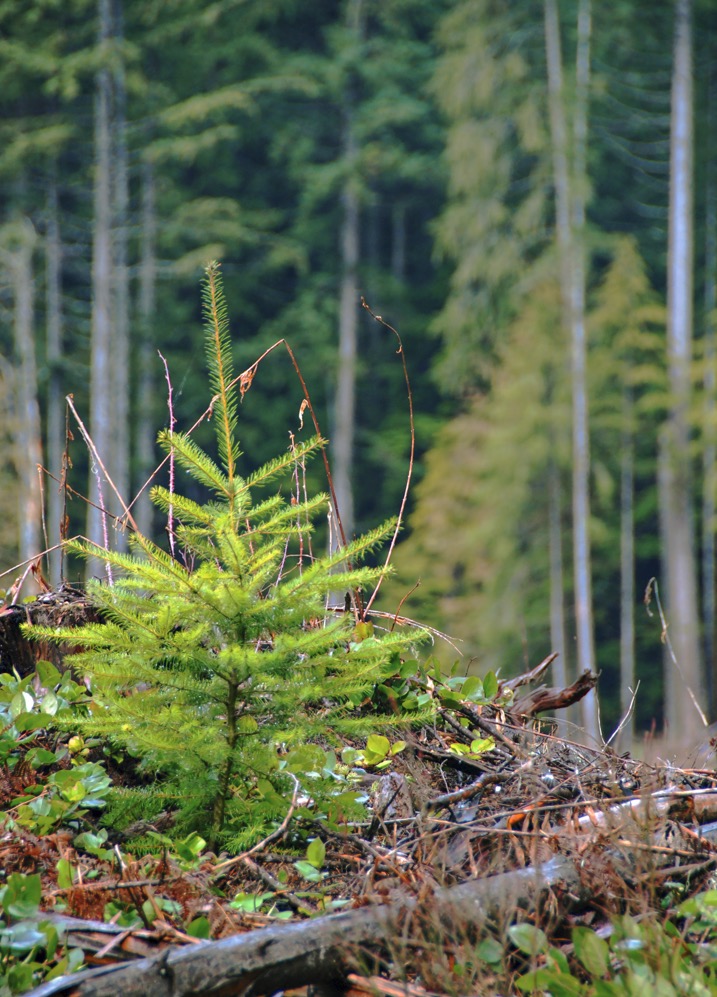 Protecting forests globally could vastly increase the amount of carbon they sequester, a new study finds, but given our current emissions track, does it really matter? For Thomas Crowther, professor at ETH Zurich and an author of the assessment, the answer is a resounding yes. …But for others, calculating the hypothetical carbon storage potential of global forests is more an academic exercise than a useful framework for forest management. Martin Lukac, a forester and professor of ecosystem science at University of Reading considers forest carbon potential calculations like these “dangerous,” warning they “distract from the main challenge and offer false hope.” In 2019 Crowther produced a study on how many trees the Earth could support, where to plant them and how much carbon they could store. That work caused a firestorm of criticism, with experts unpicking everything from its modeling to the claim that reforestation was the “best” solution available.
Protecting forests globally could vastly increase the amount of carbon they sequester, a new study finds, but given our current emissions track, does it really matter? For Thomas Crowther, professor at ETH Zurich and an author of the assessment, the answer is a resounding yes. …But for others, calculating the hypothetical carbon storage potential of global forests is more an academic exercise than a useful framework for forest management. Martin Lukac, a forester and professor of ecosystem science at University of Reading considers forest carbon potential calculations like these “dangerous,” warning they “distract from the main challenge and offer false hope.” In 2019 Crowther produced a study on how many trees the Earth could support, where to plant them and how much carbon they could store. That work caused a firestorm of criticism, with experts unpicking everything from its modeling to the claim that reforestation was the “best” solution available.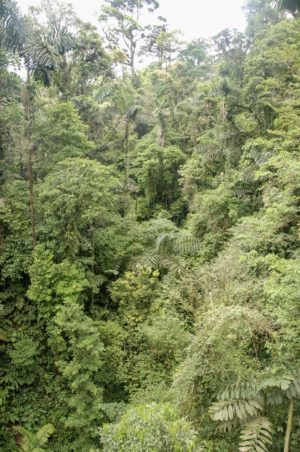 The Amazon, which holds the world’s biggest river, rainforest and a fifth of its fresh water — is running dry. The region is entering its fifth month of a drought that has been particularly punishing in the northern reaches of the rainforest. …The Rio Negro, a northern Amazon tributary, fell to the lowest levels in its recorded history last month. Wildfires have advanced where waterways have retreated. …The effects of the drought are rippling through the forest. …This year’s disaster follows damaging droughts in 2005, 2010, 2015, 2016 and 2020. Each successive blow — combined with ongoing deforestation and rising temperatures — chips away at the Amazon’s ability to bounce back and puts it closer to a tipping point at which parts of the rainforest could permanently transform into a savanna. …Big droughts used to rarely hit the Amazon — about once every 20 years or so, according to Nobre. But, due to climate change, they’ve come more frequently.
The Amazon, which holds the world’s biggest river, rainforest and a fifth of its fresh water — is running dry. The region is entering its fifth month of a drought that has been particularly punishing in the northern reaches of the rainforest. …The Rio Negro, a northern Amazon tributary, fell to the lowest levels in its recorded history last month. Wildfires have advanced where waterways have retreated. …The effects of the drought are rippling through the forest. …This year’s disaster follows damaging droughts in 2005, 2010, 2015, 2016 and 2020. Each successive blow — combined with ongoing deforestation and rising temperatures — chips away at the Amazon’s ability to bounce back and puts it closer to a tipping point at which parts of the rainforest could permanently transform into a savanna. …Big droughts used to rarely hit the Amazon — about once every 20 years or so, according to Nobre. But, due to climate change, they’ve come more frequently. 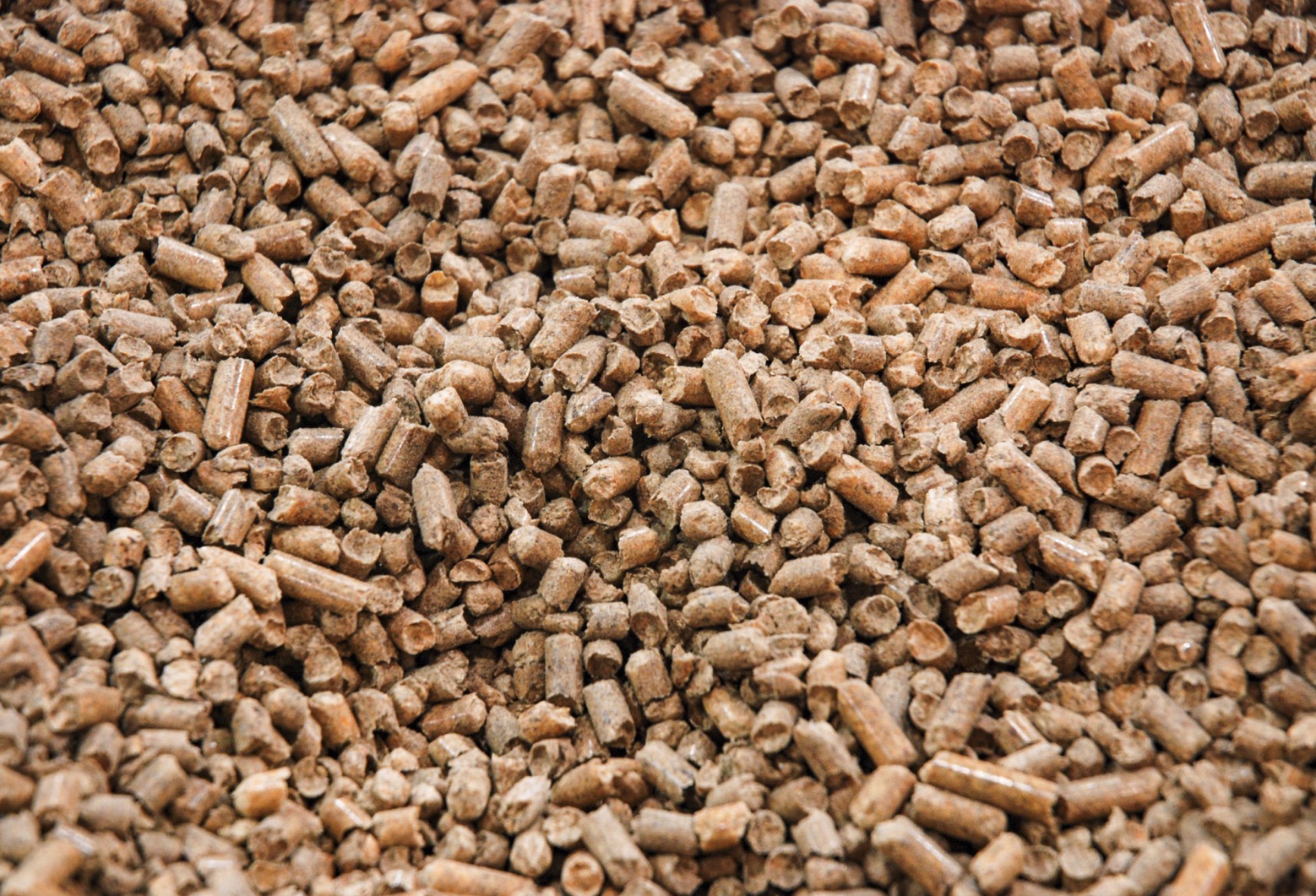 The Government is facing a legal challenge over its reliance on burning trees for green energy in its climate plans. Rewilding charity The Lifescape Project, backed by the Partnership for Policy Integrity, filed an application for a judicial review in the High Court on Friday. The case alleges that the Government’s Biomass Strategy … is unlawful and will undermine the UK’s ability to achieve net zero by 2050. …This process, known as Bioenergy with Carbon Capture and Storage (BECCS), is claimed to create “negative emissions” because the carbon released by burning wood is also absorbed by newly planted trees. …The new legal case alleges that the strategy fundamentally misrepresents the dangers of BECCS and that the Government received evidence from the US showing that the wood pellet industry is logging wetland hardwood forests in the US Southeast. …a BBC investigation found that logging forests for fuel has affected ancient and biodiverse forests in Canada.
The Government is facing a legal challenge over its reliance on burning trees for green energy in its climate plans. Rewilding charity The Lifescape Project, backed by the Partnership for Policy Integrity, filed an application for a judicial review in the High Court on Friday. The case alleges that the Government’s Biomass Strategy … is unlawful and will undermine the UK’s ability to achieve net zero by 2050. …This process, known as Bioenergy with Carbon Capture and Storage (BECCS), is claimed to create “negative emissions” because the carbon released by burning wood is also absorbed by newly planted trees. …The new legal case alleges that the strategy fundamentally misrepresents the dangers of BECCS and that the Government received evidence from the US showing that the wood pellet industry is logging wetland hardwood forests in the US Southeast. …a BBC investigation found that logging forests for fuel has affected ancient and biodiverse forests in Canada.


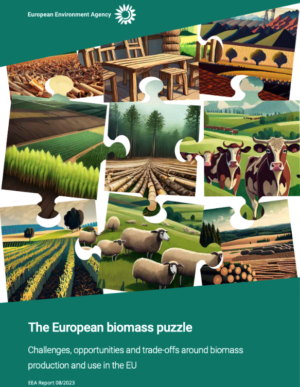 The European Environment Agency report ‘
The European Environment Agency report ‘
